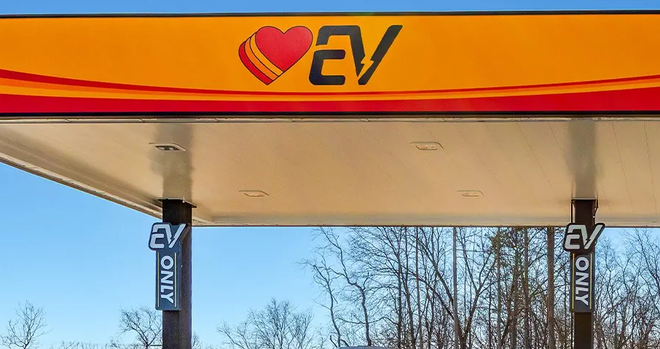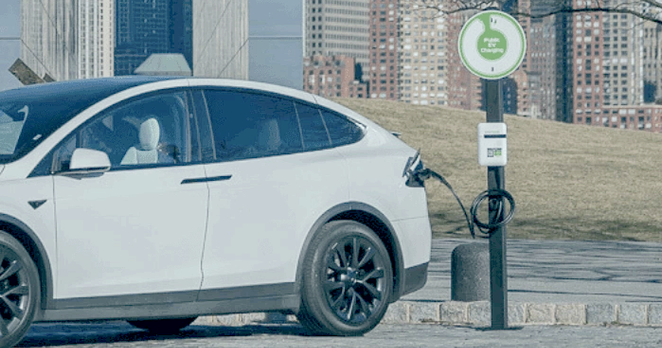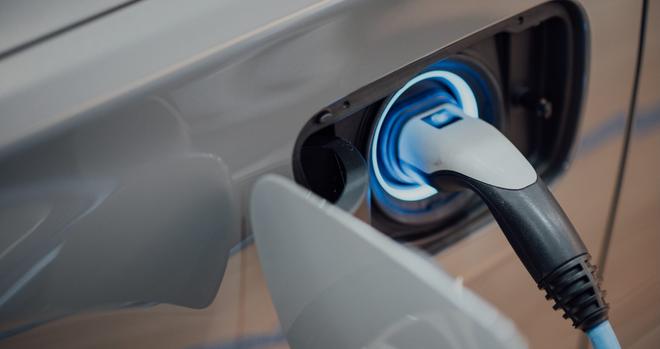On EV charging, Love's Travel Stops knows a good thing when it sees it.

On EV charging, Love's Travel Stops knows a good thing when it sees it.

Figures from a new T&E UK report: public charging prices have gone up (and not come down), shaping the perception of expensive public #EV charging.
And: in some areas public charging points are out of order longer than in others
https://www.transportenvironment.org/te-united-kingdom/articles/charging-lottery-a-consumers-perspective
#EVcharging
Enhancing Grid Resilience and EV Charging Efficiency Through Advanced Technology https://www.byteseu.com/1226762/ #ElectricVehicle #ev #EVCharging #Technology #V2G
Another proof of life for the US vehicle electrification movement.
https://cleantechnica.com/2025/07/24/two-us-ev-charging-firms-hook-up-to-scale-up/

#bppulse opens massive #EV charging hub near #LAX #Airport, it's largest in the #US to date
This is the first of many “#Gigahubs” in the works and has opened as #bp pulse’s largest #EVcharging station in the US. According to a release from bp pulse, the new EV charging #Gigahub is located two miles from LAX Airport and features 48 DC charging piles. The chargers offer a mix of 150kW and 400kW options as well as #CCS and #NACS plugs.
https://electrek.co/2025/07/23/bp-pulse-opens-ev-charging-hub-lax-airport-largest-us/

“Rising number of charging cables trailing across London’s pavements is heightening trip hazards and posing risks to pedestrian safety
London Councils’ new guidance details cross-pavement EV charging solutions offering safer way for Londoners without driveways to charge at home”
https://www.londoncouncils.gov.uk/news-and-press-releases/2025/electric-vehicle-revolution-hits-pavement-new-guidance-tackles-trip
#EVcharging
Excellent: “the new site and map are designed to help roll out EV charging faster and more efficiently in the places they are best for consumers and where they can be most readily supported by the grid.”
https://thedriven.io/2025/07/18/ev-mapping-tool-and-one-stop-shop-launched-to-identify-charging-locations-and-help-buyers/ #EV #EVcharging

One million public EV chargers, coming soon to a parking lot near you.
https://cleantechnica.com/2025/07/01/ev-charging-coming-soon-to-a-parking-lot-near-you/

One million public EV chargers, coming soon to a parking lot near you.
https://cleantechnica.com/2025/07/01/ev-charging-coming-soon-to-a-parking-lot-near-you/

A drop-in, transportable EV fast charging station helps fleet electrify faster, powered by a multifuel gas generator (includes RNG and captured flue gas).
Thermal limited!! HOT!!
The European Commission has published new requirements for EV charging points. These requirements will make hardware more expensive and add to the complexity of the already opaque pricing landscape for public EV charging. They also lack a focus on true interoperability from a user's perspective.
https://www.linkedin.com/posts/jaapburger_the-delegated-act-amending-the-european-alternative-activity-7341072722594029568-AUf5
#AFIR #EVcharging
Low Energy to High Energy: Daan Keuper exposes how nearby EV chargers can be hacked over Bluetooth. Important insights into security risks in EV infrastructure. #Cybersecurity #EVCharging #Bluetooth #Infosec
Watch here: https://youtu.be/KOqfjjzCLQE?si=6cV5qi3zzOPJ-8Bc
Alberta right now. Seeing this with almost every charger. #EVCharging
More public EV charging stations are coming to the US, Trump or no Trump.
Applegreen pounces on huge opening in US EV charging market.
#evcharging #chargingstations #evchargers #evs #electricvehicles #supercharger #teslasupercharger #publicevchargers #evfastchargers #evsales #gasstations #fuelstations #conveniencestores #travelmarts #travelservices #traveling
Does anyone have any knowledge about EV charging infrastructure in the Balearic Islands? Whilst on holiday in Menorca, I stumbled upon some chargers branded with Ingleteam and MELIB, the latter appears to have lots of charging points and an app. I've raised issues for both on the #NameSuggestionIndex #OpenStreetMap #EVCharging
The beneficial electrification movement is growing, Trump or no Trump.
New convenience store ditches gas pumps for EV fast charging stations on busy highway.